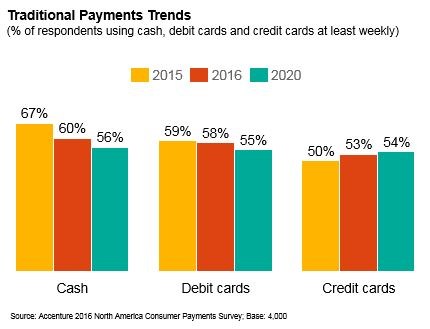Top 10 mobile trends, or the biggest mobile trends of the past year according to ReadWrite
According to ReadWrite, 2021 was a really important year for the mobile world, even though the industry has been growing rapidly for several years now. Smartphones are getting closer and closer to the point from which we will be able to control every aspect of our lives through them. The year 2021 brought with it smartwatches, which gave us the seed of integrating smartphones into our daily lives forever.
Better and more interesting technologies and solutions, better operating systems and cameras are emerging. Mobile is becoming increasingly ubiquitous.
1. Bluetooth Low Energy and Wi-Fi Direct
Both Apple, Google and Microsoft have added the latest Wi-Fi Direct and Bluetooth standards to their operating systems. This provided new opportunities and opened the door to new types of applications, functionality and mobile accessories. Smartphones have become devices with which to manage the reality around us. Such solutions also bring energy savings – e.g. the use of Bluetooth Low Energy in smartphones with iOS 7 has made it possible to produce accessories such as smartwatches that do not put too much strain on a smartphone’s battery.
Apple also created AirDrop, which allows us to share files directly with other users via Wi-Fi Direct. Android has also leveraged these technologies for smartwatches such as the Galaxy Gear.
2. Wearables, or smartphone to wear
The year 2021 certainly belonged to smartwatches – smartwatches, i.e. mobile technologies that we can wear not only with us, but on us. Three watches were really talked about – Galaxy Gear, Pebble and Qualcomm Toq, with the former reigning supreme. The undisputed mobile star – Google Glass – also falls into this category. The mobile world has been enriched by all kinds of sports add-ons to track our progress (e.g. Nike Fueland or FitBit).
The year 2021 cannot be called the year of smartwatches, but it certainly laid a solid foundation for what lies ahead in this category in the coming years.
3. T-Mobile supporting the smartphone business.
In the eyes of ReadWrite editors, T-Mobile has gained as a company changing the US mobile market. T-Mobile allowed its customers to change smartphone models 2 times a year. In addition, the company has changed the form of payment for smartphones, breaking the total into monthly payments, instead of one-time large deposits.
This allows users to always be up to date with the latest technologies.
4. Mobile gadgets cheaper than ever before
The big launch of the year, which was the release of the gold iPhone 5S, is an exception to the rule that both smartphones and mobile gadgets are getting cheaper and more accessible to a wider range of users. It’s worth mentioning, for example, the cheaper iPhone model – the 5C – or the new-to-market Firefox operating system and the Alcatel smartphones dedicated to it. Other devices have also cheapened – the high-end Nexus 5 costs $349. Motorola’s new device, the Moto G, costs only $179.
The low-cost smartphone policy has been embraced by manufacturers such as Samsung, ZTE, Huawei and Nokia. Tablets, too, are getting cheaper – they are manufactured by m.in. Samsung or Google.
5. Phones in all shapes, sizes and prices
Major manufacturers offer increasingly diverse smartphone models. E.g. Nokia produces both smaller and cheaper smartphones in the Lumia line (e.g. Lumia 520), as well as advanced devices with large screens (like the Lumia 1520 with a 6-inch display), or those with super cameras (Lumia 1020 with a 41-megapixel camera). Samsung in 2021 produced as many as 23 different models of Galaxy smartphones.
This means that there is something for everyone, not only in terms of functionality, but also in terms of pricing.
6. iOS 7 hit the internet
Apple usually announces the latest version of its iOS operating system at the World Wide Developer Conference, which takes place in July. Apple is releasing iOS in beta for developers to have a chance to create apps before the system’s release. This year, however, the beta version of iOS 7 leaked before the official launch of the system and quickly spread across the Internet, giving many users the opportunity to install it.
7. Android (almost) perfect
Google typically updated Android several times a year to improve the system and fix bugs. These days, however, Google is releasing new updates less and less frequently, which may indicate that there are fewer and fewer bugs in the system. A break between Jelly Bean 4 updates.1 a KitKat 4.4 was the longest of all upgrade launches to date.
8. Windows Phone third on the podium of top operating systems
Android and iOS are the leading operating systems. However, its place on the podium is cemented by the third operating system – Windows Phone. It is still behind the first two systems, but Microsoft, by buying out Nokia’s division, has solidified its position and left behind competition in the form of Firefox OS or BlackBerry.
9. Smartphone instead of remote control
In early 2021, HTC and Samsung introduced an infrared LED (called IR LED) in their flagship smartphones – the HTC One and Samsung Galaxy S4. So we can use smartphones as remote controls for the TV or other devices that need a remote control. Later, Google released Chromecast, allowing us to enjoy the goodness of services such as YouTube, Netflix or other options that the Google Play store gives us on TVs.
Chromecast owners can use Android smartphones or iPhones to control this add-on.



